Dozens of Palestinians evacuated to Gaza hospitals after Israeli snipers open fire on the Great Return March for the sixth week in a row.
By +972 Magazine Staff
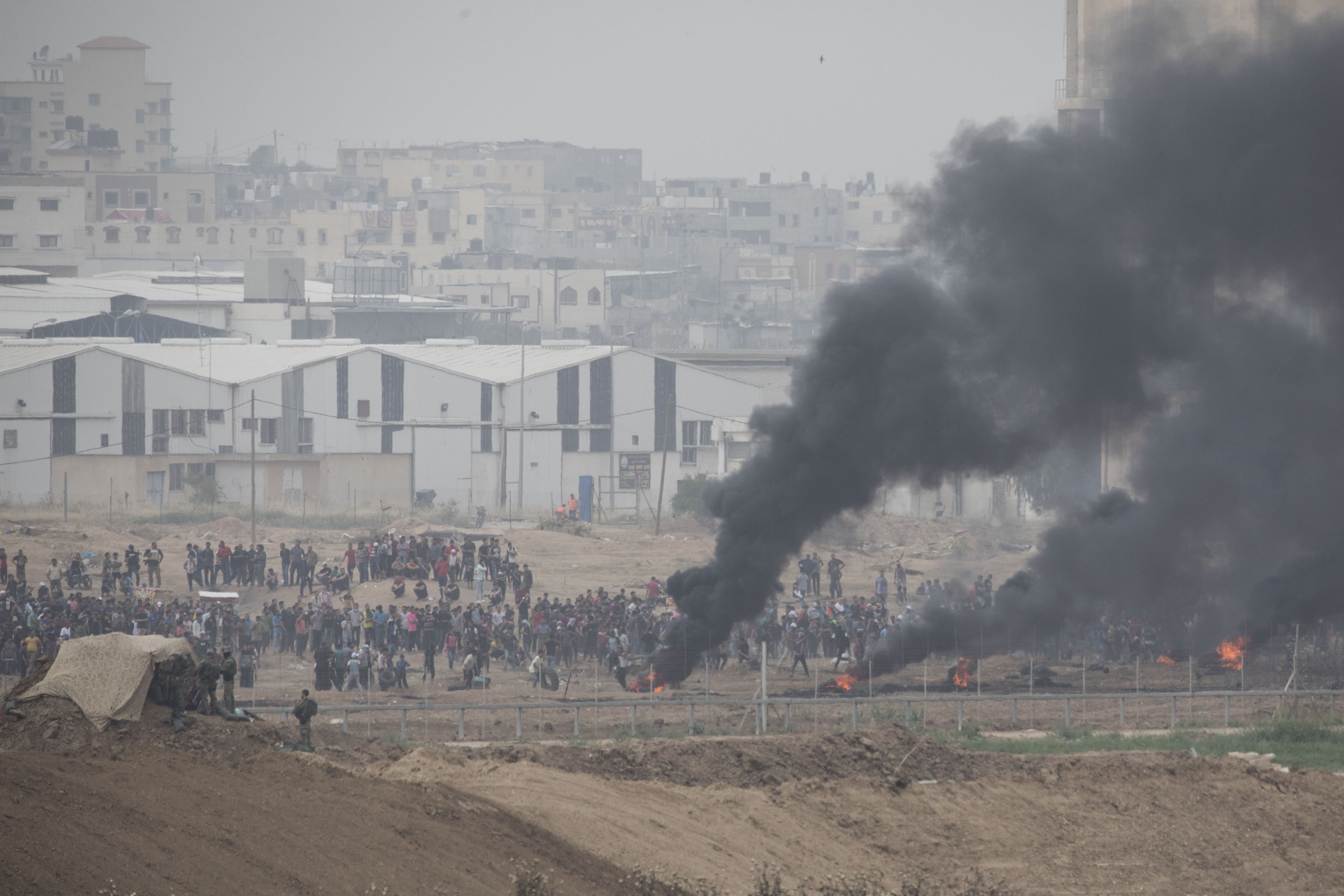
Israeli forces opened fire on Palestinian protesters Friday for the sixth consecutive week on the border with Gaza. Part of the 45-day Great Return March, which began on March 30, the demonstrations are set to culminate on May 15, Nakba Day.
Over 7,000 Palestinians took part in Friday’s demonstrations in five different locations along the Gaza-Israel border. According to Gaza’s Health Ministry, over 43 protesters were wounded, including three critically, in the clashes with Israeli forces. A total of 45 Palestinians have been killed on the border since the march began.
Not far from the border, members of the Arab Higher Monitoring Committee, including members of Knesset from the Joint List, Ahmad Tibi, Haneen Zoabi and Jamal Zahalka, held a small demonstration outside Kibbutz Yad Mordechai to condemn the violence against unarmed demonstrators. “We are here to demonstrate against snipers, who are targeting civilians in Gaza, who are demanding freedom, liberty, breaking the siege, and return,” Tibi told +972.
Meanwhile, supporters of Defense Minister Avigdor Liberman’s Yisrael Beiteinu party demonstrated on the Israeli side of the border, unfurling a giant Arabic banner that read: “Only Liberman understands Arabic — don’t mess with him.”
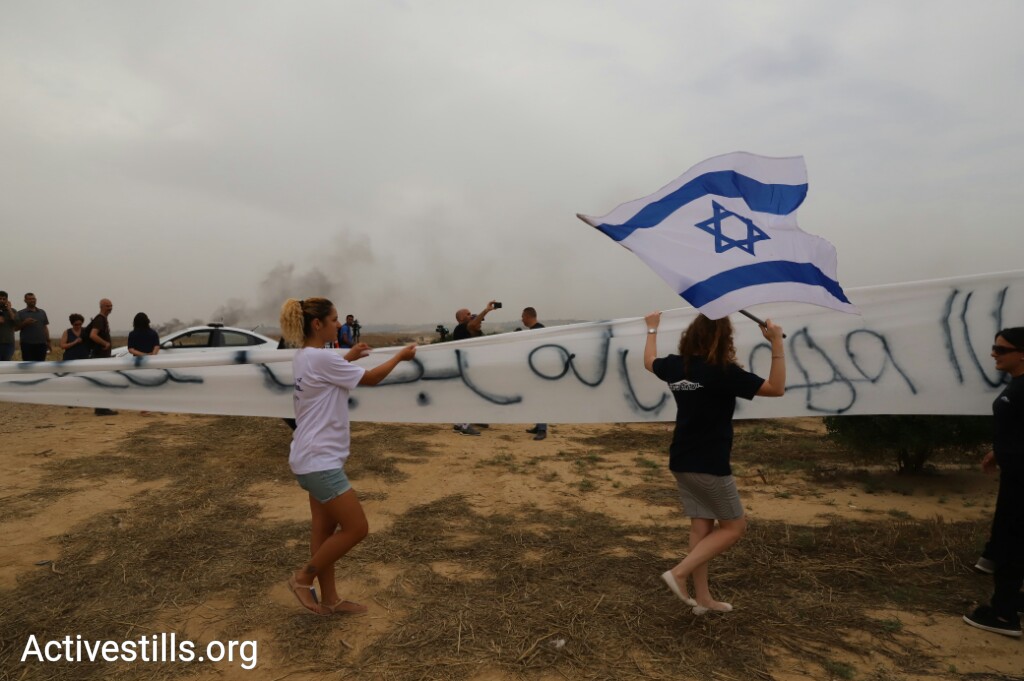
Since the Great Return March began in late March, Israeli sharpshooters and snipers have shot over 5,000 unarmed Palestinian protesters, according to the United Nations.
Following protesters during the first week of April, Fatou Bensouda, chief prosecutor for the International Criminal Court, warned that “violence against civilians — in a situation such as one prevailing in Gaza” could constitute war crimes.
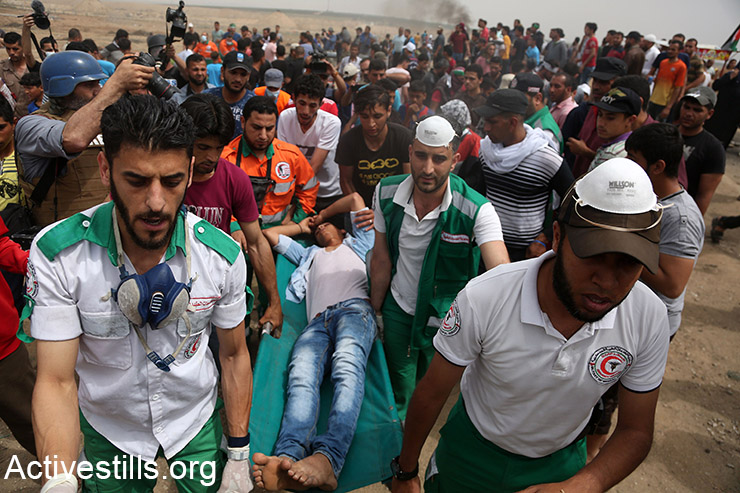
Israeli human rights group B’Tselem has urged Israeli soldiers to refuse orders to open fire on the protesters. Four prominent Israeli human rights groups petitioned the High Court of Justice last Sunday demanding that the court order the state to revoke the rules of engagement that permit shooting demonstrators who pose no danger to human life.
Responding to the petition, the state has argued that the demonstrations fall into the category of a “state of war,” and therefore human rights law does not apply to the rules of engagement.
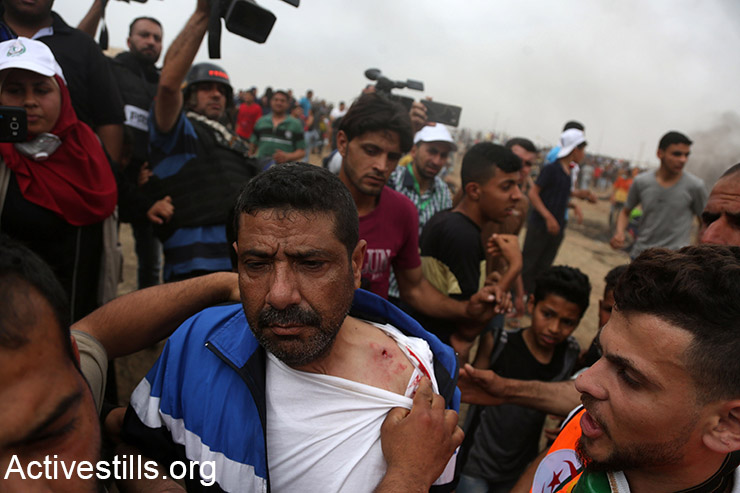
During protests earlier in April, Israeli forces shot at least six journalists in one day. Among them was Yasser Murtaja, a photographer for “Ain Media,” who was reportedly wearing a helmet and vest clearly marked “PRESS” when he was shot; he later died of his wounds.
Inside the Gaza Strip, the Palestinian protesters have built a tent encampment with different tents corresponding to the villages and towns that were destroyed during the Nakba (in Arabic, the Catastrophe), in 1948. More than 700,000 Palestinians were expelled or fled their homes during the 1948 war and its aftermath. Israel subsequently destroyed nearly all of their homes and villages.
Speaking to +972 Magazine before the first day of protest last month, one of the ‘Great Return March’ organizers, Hasan al-Kurd, explained that the plan was to set up camps between between 700-1000 meters from Israel’s border fence, outside the Israeli army’s unilaterally imposed buffer zone. In the weeks leading up to Nakba Day, there would be weekly marches as well as bicycle races and other events.
By mid-May, the Return March organizers hope that hundreds of thousands of Palestinians will join.
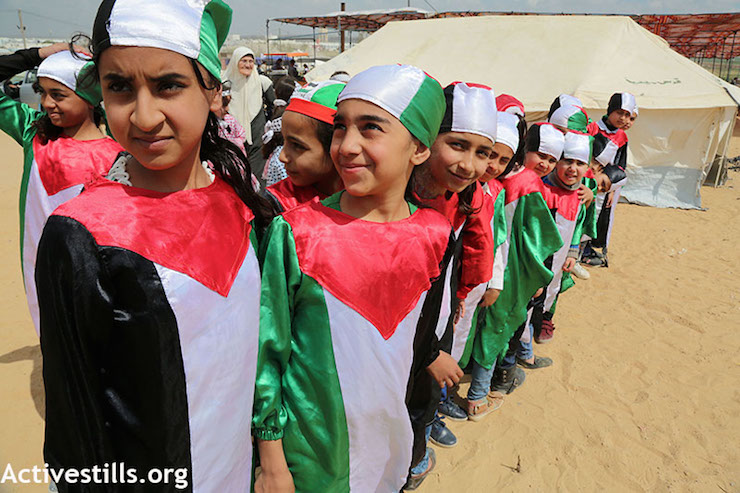
“We want families. We want to live in peace — with the Israelis,” al-Kurd said. “We will make sure the protest doesn’t escalate to violence — at least from our end.”
Even before the march began, however, Israeli security forces launched a public campaign painting the ‘Great Return March’ as a violent, Hamas-sponsored event. The Israeli army’s chief of staff announced the deployment of 100 snipers and several infantry brigades to the area of the Gaza border fence. Israeli generals warned that there would be casualties.
On Land Day and Nakba in 2011, the last time a protest march of a similar scale was attempted, thousands of Palestinians from Lebanon, Syria, the West Bank, Gaza, and inside Israel marched on Israel’s borders. The army responded with gunfire on the Lebanese, Syrian, and Gaza borders, killing dozens and wounding hundreds.
